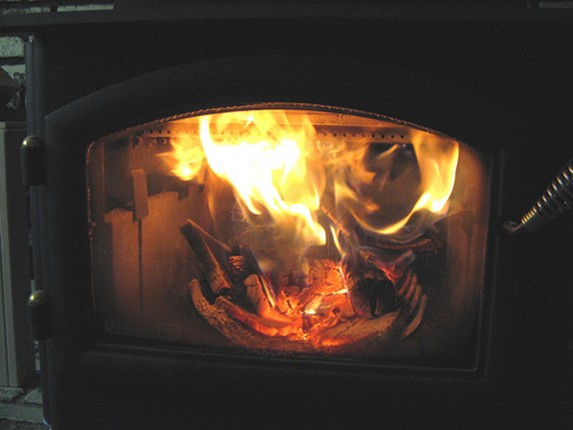Wood-burning stoves can be hard work but have their benefits, especially if you grow the right timber.
Not long after my parents retired to their dream cottage on the fringe of the Highlands, my father announced he was going to build a woodshed outside the back door to eliminate what he called the “suicide mission” of carrying logs across the snow-covered courtyard. “Every footstep saved is a bonus,” he said. “This is life-saving.”
And, he added, “Our wood-burning stove has needed more planning than anything else in the house and more hard labour. I should have started by planting some useful trees – and I should have done that 20 years ago.”
STORAGE AND MUSCLE
The truth is that a wood-burner is wonderful if you have plenty of wood, plus a convenient place to store it while it dries out and some muscles (your own/family/hired) to cut, chop and shift the logs around. However, the timetable can be a long one if you have to create your own forest, and you do need to grow something that will burn.
DISAPPOINTING ELM
I am a bit sensitive on the last point because the native elms in our quiet backwater in the east of Scotland have recently succumbed to Dutch elm disease, which had been creeping up on us for half a century. Today, standing gaunt and leafless, they look like the ideal fuel for our wood-burner. But the truth is that elm is a disappointment in the stove. It is surly, unwilling stuff, producing more smoke than heat. It needs to be blended with more fiery timber if it is going to heat the room and not just line the chimney with creosote.
So we have been spicing up the elm with poplar billets and softwood logs, including some Lawson’s cypress, the surviving bits of a post-war hedge that had grown to 50ft and darkened the back of the house.
IDEAL POPLARS
The poplars are hybrid Beaupré (more accurately, Populus interamericana “Beaupré”) which had been used to bulk up our shelter-belts and are now being thinned to produce some useful fodder for the stove. The trees grew wonderfully fast from foot-long cuttings thrust into the ground, producing 10ft shoots with leaves the size of tea plates. They now season quite quickly after being felled and they are ideal for the wood-burner. One of the reasons is that the wrist-thickness logs are easy to handle and our Norwegian Jøtul is designed to take long pieces of timber, propped upright rather than lying horizontally. Stoking the stove is much less back-breaking.
As you might expect, the fastest-growing trees – willow and poplar – produce sappy wood with a high moisture content. If they are cut young, however, they lose a high proportion of this water in just one summer of seasoning in a stack under cover and they will burn merrily a year after being felled. Their greatest virtue is that they can be grown as coppice timber on a five-year cycle of cut-and-come-again.
WINNING WILLOW
We thought that our lightning-quick Beaupré would be the perfect tree for our shelter-belts and also for a patch of this dedicated coppice. Sadly, it turned out that this particular hybrid is susceptible to fungus attacks if crowded into single-species coppice woods, so we have turned to common osier willow (Salix viminalis). It has most of the virtues (although it is not such a good-looking tree) and burns just as brightly. This is the willow that is being used to power some electricity-generating stations and although the statistics for the industrial-sized units may be less than convincing, it is certainly great stuff in the wood-burner.
The cultivation of coppice timber is fast when compared with most forms of forestry. Begin by planting cuttings (25p each) in spring, protect them against deer and rabbits, and kill any weeds; that autumn, cut back to encourage multi-headed growth. In the fourth or fifth year, take a harvest of saplings and cut everything down to 4in stumps. You can repeat this process every four years – the trees will be happy with this regime for some time.
GROUND WORK
You will need a trusty chainsaw, a big trailer behind your 4×4, a mower to trim between the rows of coppiced willow or poplar and somewhere with a roof where your billets can be seasoned. Some growers say more than 10 tons of stove logs can be harvested each year from 21⁄2 acres (one hectare) of coppice.
Is it worth the effort? In terms that your accountant would understand, probably not. The Consumers’ Association estimates that a wood-burner might save £100 a year compared with gas. But the night might come when the power is cut, the gas flickers out and the mercury is going down fast. And that night, a million owners of wood-burning stoves will throw another log on the fire and feel really good.






